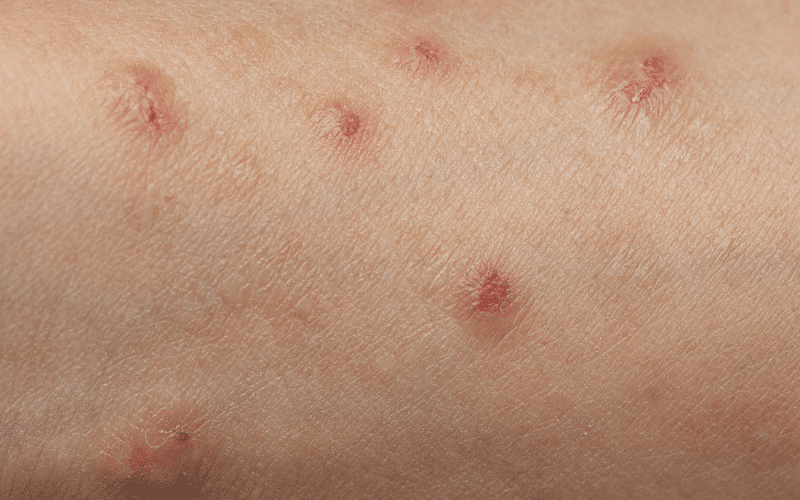3. Skin Lesions: The Outward Display of an Internal Struggle

The skin provides a canvas for Behcet’s Disease to express itself, manifesting as various types of skin lesions. These lesions are not only visible evidence of BD but can also offer clues to the disease’s underlying processes.
One such manifestation is erythema nodosum-like lesions. These lesions resemble hard, painful nodules and usually emerge on the lower legs. They may appear reddish or purplish, resembling a bruise, and usually range from one to five centimeters in diameter. The presence of these lesions underscores the inflammatory nature of Behcet’s Disease.
Behcet’s Disease also presents as acneiform nodules, especially in younger patients. Unlike common acne, these nodules are a direct consequence of the immune system’s misdirected attack on the body’s own cells. These lesions can occur anywhere on the body, adding another layer of complexity to BD’s symptomatology.
Pustular lesions are another skin manifestation. They appear as small, raised bumps filled with pus. While they might resemble common pimples, they tend to be larger and more painful. Their presence further illustrates the disease’s multi-faceted nature.
Interestingly, these skin lesions may also exhibit a pathergy reaction, an exaggerated skin injury response. A minor skin prick or scratch in BD patients can lead to a larger-than-expected skin reaction, an insightful detail about the disease’s workings.
A less common but notable skin manifestation is vascular involvement, which can lead to thrombophlebitis or blood clots in the veins. This can result in redness, swelling, and tenderness along the affected vein, marking a more serious stage of the disease. It’s a clear reminder of how far-reaching and varied Behcet’s Disease can be. (3)